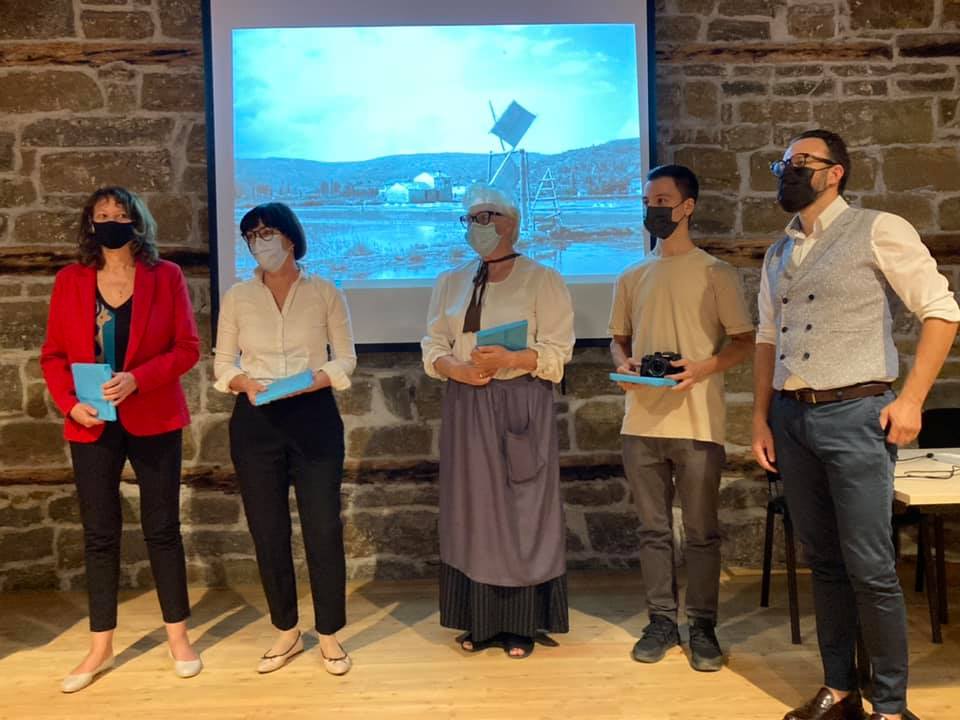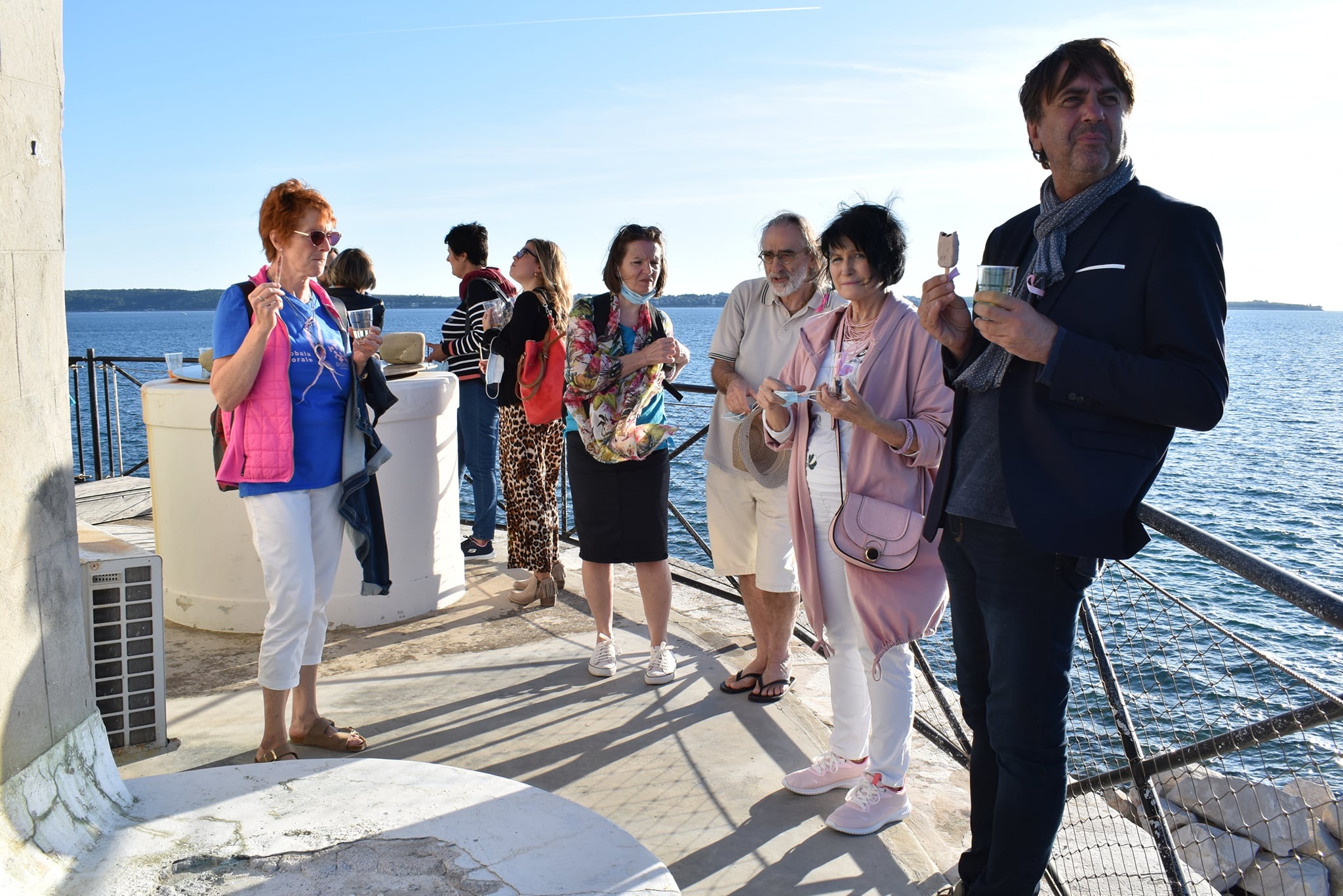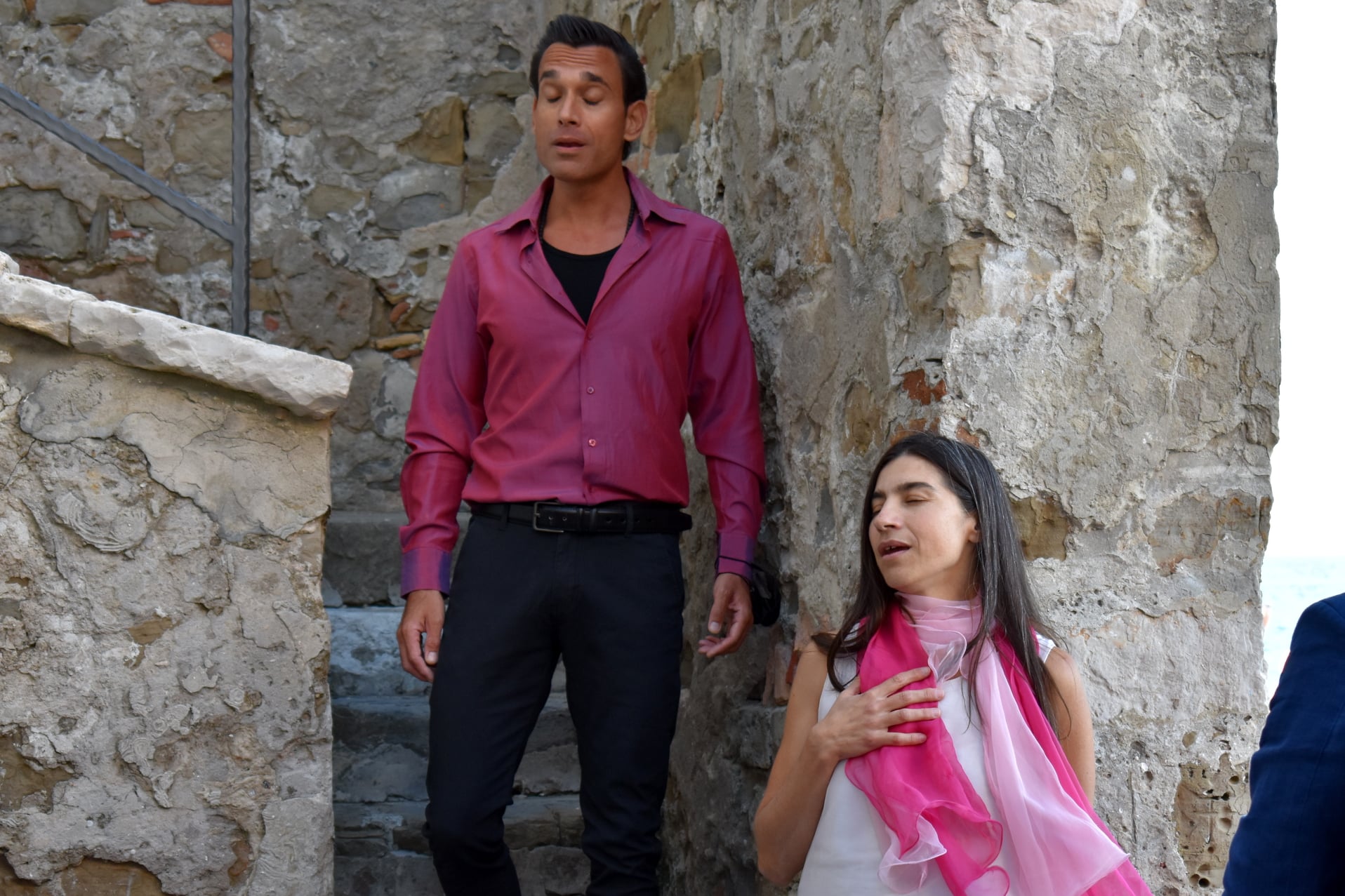Preprečevanje raka na dojkah: Piran se je obarval v rožnato

Zaključil se je projekt Solinarska kulinarika
09/30/2021
V Izoli predstavili knjigi Daniele Paliaga Jankovič
10/07/2021
Z otvoritvenim dogodkom v Piranu, ko so z rožnatimi trakovi in pentljami okrasili oljke pred občinsko palačo, se je na obali začel ’Rožnati oktober’. V duhu sodelovanja med obalno sekcijo Združenja Europa donna Slovenia in istrskimi občinami ter ob podpori lokalnih SSIN in SI bodo ob mesecu, posvečenem ozaveščanju o raku na dojkah, vse štiri obalne občine obarvane v rožnato. Obiskovalce na Tartinijevem trgu so sprejeli predstavniki SSIN Piran in SI Piran in aktivistke združenja Europa Donna ter jim izročili broške z rožnatimi trakovi.
Nato so se odpravili proti svetilniku, prizorišču drugega dela prireditve, kjer sta jih pričakala Miriam Monica in Neven Stipanov ter jim v dobrodošlico zapela La vie en rose Edith Piaf. Sledilo je odprtje skupinske razstave z naslovom Ženske v rožnatem z deli akademskih slikark Nade Dellore, Fulvie Grbac, Mire Ličen, Helene Korošec, Veruš VIllangò, Fulvie Zudič, Erike Cerkvenik in Francesche Salcioli. Slednji sta članici tržaške sekcije Združenja za boj proti raku.
»Počaščeni smo, da gostimo razstavo in po zaslugi tega sodelovanja posredujemo tako pomembno sporočilo, še posebej v času, ko govorimo samo o Covidu,« je dejal Andrea Bartole, predsednik SSIN.
Po besedah Darje Rojec, koordinatorke območnega združenja, ki se ukvarja z bojem proti raku dojk, je zdaj, ko je zdravljenje zaradi epidemije manj dostopno, preventiva še toliko bolj pomembna.
»V Sloveniji vsako leto za rakom zboli trinajst tisoč ljudi, od tega šest tisoč žensk, večinoma za rakom dojk. Zelo visoke številke so to, zato moramo obveščati in osveščati ženske, naj si redno pregledujejo dojke, saj si tako lahko rešijo življenje,«je dodala Rojec.
Ob zaključku srečanja so se vsi posladkali s sladicami iz slaščičarne Sare Rutar, prve zmagovalke oddaje Masterchef Slovenia. Razstava je na ogled do konca meseca.
Besedilo in foto: Kris Dassena
Prevod: Nataša Fajon










